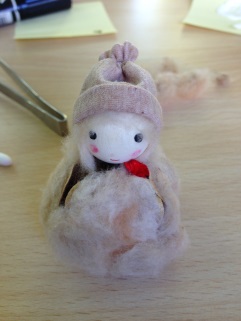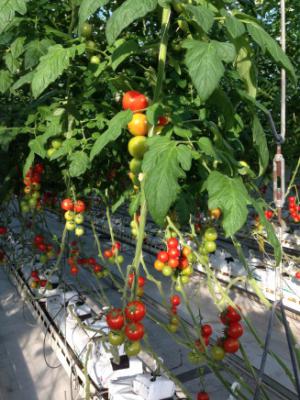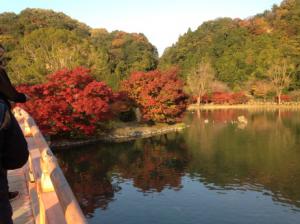The JET Study Tour to Iwaki took place on November 16th to 17th, and it was a very worthwhile experience. Although I have lived in Iwaki for over a year now, it made the severity of the disaster and the power and resilience of the Iwaki people so much more real for me. Our first stop on Saturday morning was the Fukushima Agricultural Technology Centre in Koriyama, where we learned about how meat, rice, fruit and vegetables are tested for radiation in Fukushima, as well as about research into new strains of rice, fruit and vegetables. Hearing our guide’s talk and seeing the facilities reinforced my belief in the safety of Fukushima produce – it’s perhaps even safer than some of the food back home! Did you know that the permitted radiation reading for food in Japan is ten times stricter than those of the EU and the USA? Our first stop in Iwaki was Tomato Land. Tomatoes are less affected by harmful rumours as they are grown in glasshouses, so sales have apparently returned to normal. And the tomatoes – delicious! We were given a bag and told to fill both them and our stomachs. I took them at their word!!
The shopping street in Hisanohama was a real eye-opener for me. I had visited the devastated area before, but I had never spoken to anyone about their experience for fear of seeming tactless. At the shopping street, I heard first-hand of how one lady ran from the tsunami. It is amazing to me to hear the stories of these people, and see how their resilience is so great that, when people began returning but had no place to shop, these shopkeepers set up temporary stores in front of the local school. Their desire to keep going despite their experiences was really inspiring. If ever you have the chance, go and visit these people – you won’t be the same. On the second day, we visited the Organic Cotton Project in Onahama. This project leases abandoned farmland to grow brown cotton, a crop that is relatively unaffected by rumours. The project has created jobs for displaced people, and the profits go to charity projects. They hope in the future to make cotton a thriving industry in Fukushima. At the project, we experienced cotton picking and got the chance to make cute little dolls using raw cotton which are usually made by housewives living in temporary housing. It was a lot of fun! At the Kisen Kamaboko Factory, we learned about the efforts of the small company to revitalise their business after the disaster. There, they regard the disaster as an opportunity to realise and correct problems that were not visible before, and to make unique products to draw visitors to Fukushima. Shiramizu Amidado, a designated National Treasure and Historic Site, provided a picturesque ending to the tour. Apparently we had great timing as locals told us the autumn colours were at their very best.
Overall, a great tour was enjoyed by all. Now, I have greater knowledge of my city and the efforts of people living here. I can’t properly express my feelings of gratitude, appreciation and amazement, except to say how proud I am to live here, in Iwaki, in Fukushima. がんばっぺ、福島! |  |
| Summary |









